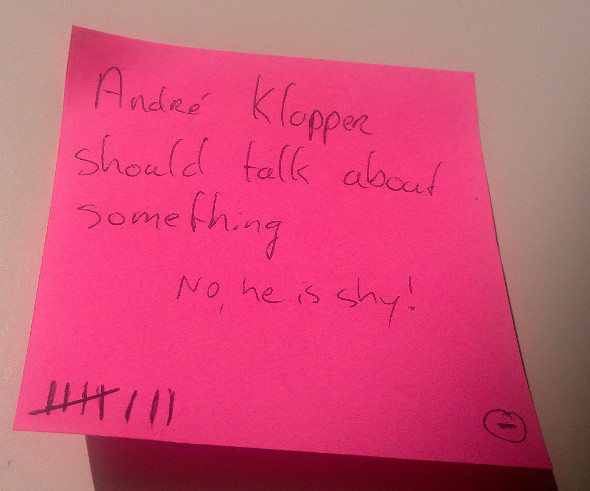
Filthy attempts on the unconference session scheduling whiteboard by so-called “friends” trying to trick me into literally ‘something’.
They won’t succeed.
#makeandrenevertalkagain #noicecreamleftbehind

Filthy attempts on the unconference session scheduling whiteboard by so-called “friends” trying to trick me into literally ‘something’.
They won’t succeed.
#makeandrenevertalkagain #noicecreamleftbehind
In late March 2016, I attended some Wikimedia gatherings in the Middle East: The WikiArabia conference in Amman (Jordan), a Technical Meetup in Ramallah (Palestinian territories), and the Wikimedia Hackathon in Jerusalem (Israel).
I gave an introduction to the many technical areas in Wikimedia anyone can contribute to. I also gave an introduction how to use Phabricator, the project management suite used (for mostly technical aspects) by the Wikimedia community which allows managing and following progress in projects and collaborating with developers.
As I love discussing society and politics I was not sure initially how much I’d have open and blunt conversations. But on the first evening I was already sitting together with folks from Tunesia, Egypt and Saudi-Arabia who were comparing the situations in their home countries. People also allowed me to learn a little bit about how daily life is in Iraq or Saudi-Arabia.
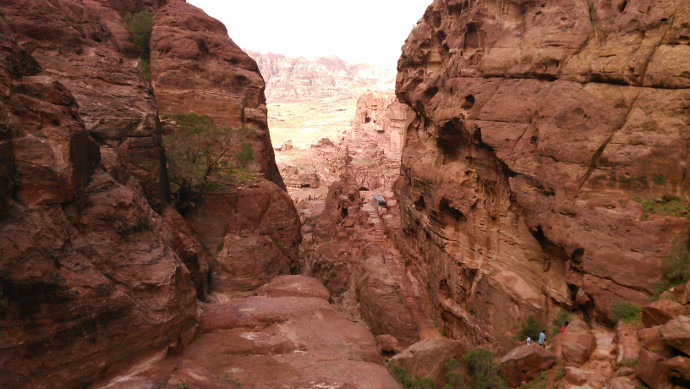
Petra
After a short trip to Petra, we spent an entire day to get to and cross the border between Jordan and the West Bank. If you look at the mere distance it feels ridiculous. It definitely makes you appreciate open borders.
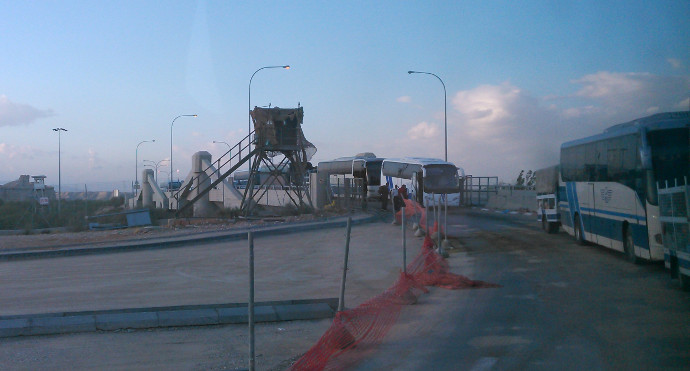
At the border crossing between Jordan and the West Bank
Afterwards, we were very lucky that Maysara (one of our hosts) took the time and his car to drive us around in the Westbank to visit a bunch of spots, pass settlements, look at walls, or wonder which streets to take (sometimes a checkpoint with a soldier pointing a machine gun at you helps making decisions).
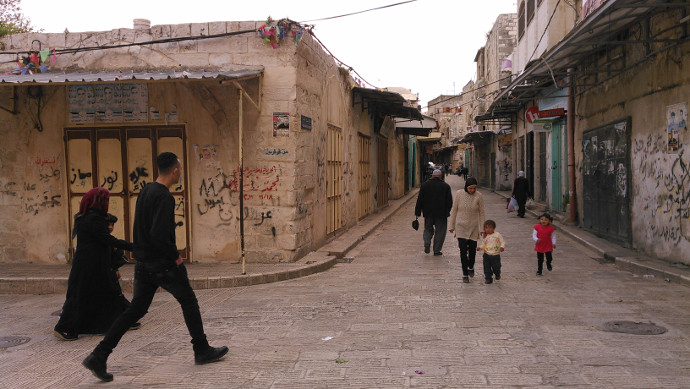
The old city center of Nablus
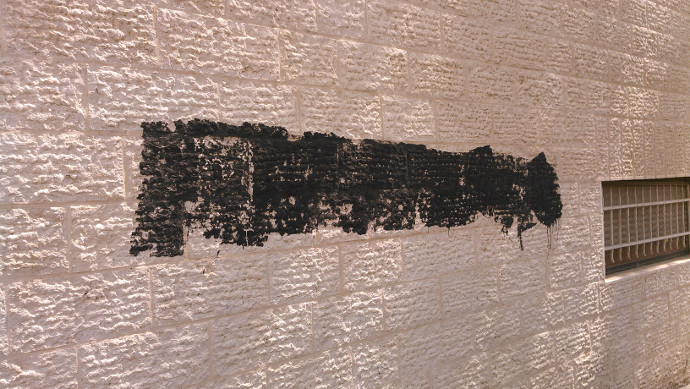
Graffiti on graffiti in Ramallah
At some point, Maysara simplified it in a single quoted sentence: For Israelis it’s fear. For Palestinians it’s humiliation.
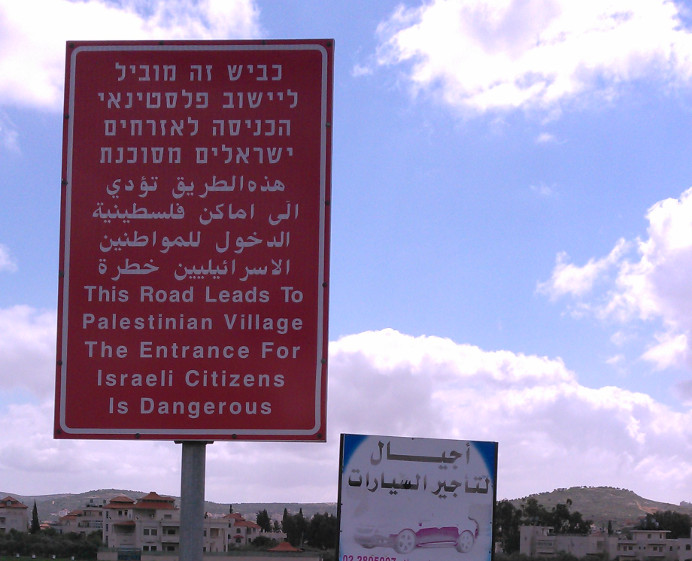
Street sign in the West Bank
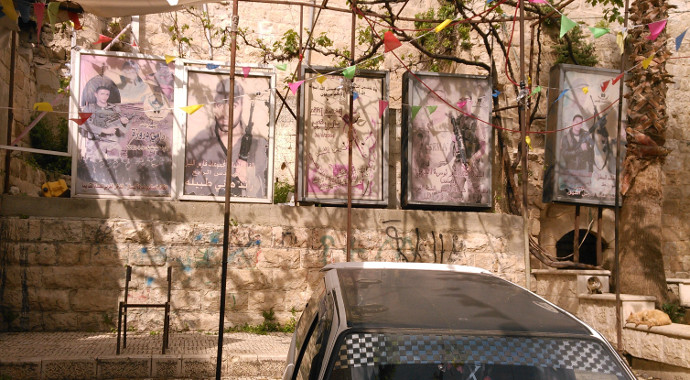
Imagery of dead fighters in Nablus
In Israel, we walked through Jerusalem’s old town, visited Masada and took a bath in the Dead Sea.
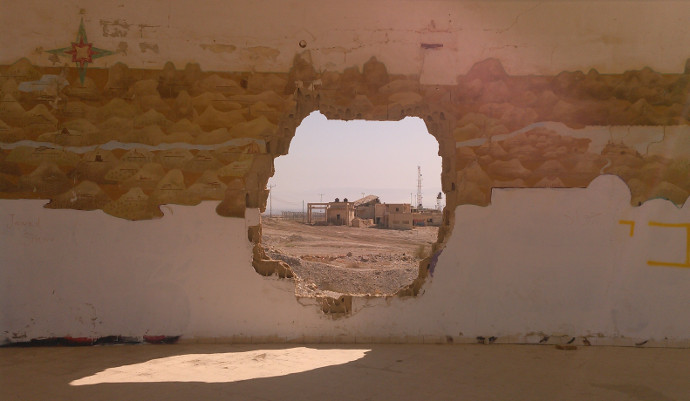
Dead Sea: Past war zones
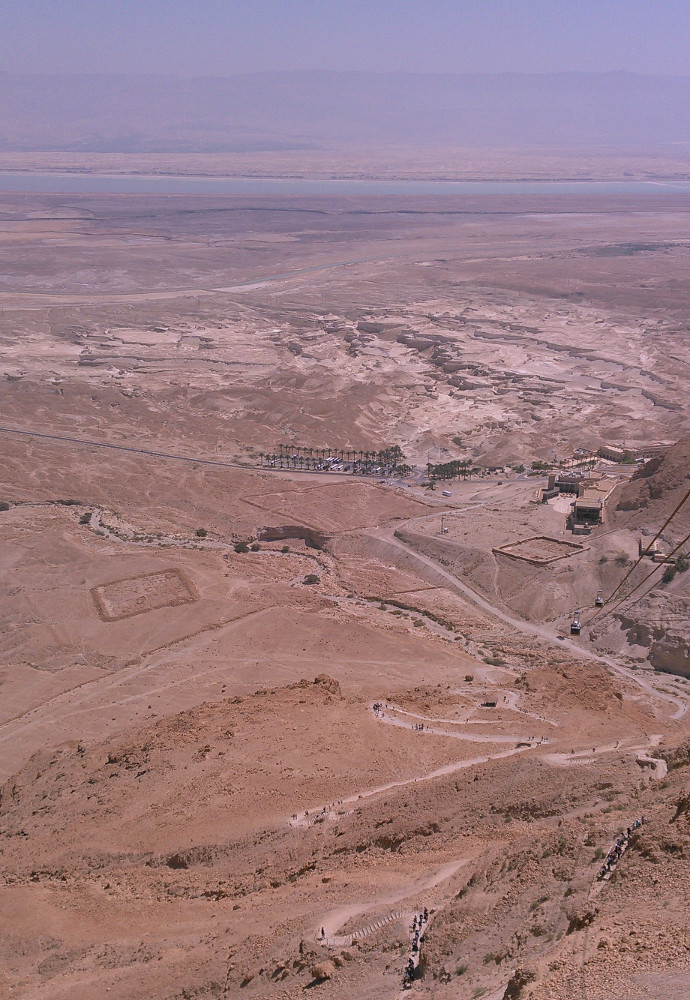
View from Masada (the squares were siege camps)
On the last day I visited the Yad Vashem Holocaust memorial with some co-workers (thanks to Moriel for organizing it). It’s obviously an activity you cannot “look forward to”. I am still impressed by our guide who explained and summarized history extremely well.
The architecture of Yad Vashem makes you go through several rooms on the left and right of the passageway in a chronological way and our guide mentioned several times that you “cannot yet see what is coming a few rooms (means: a few years) later”, and the question “Why did Jewish citizens not flee” got answered by “Where would you try to escape to if even outside of ghettos and concentration camps everybody is hostile”. Which explained very well the self-understanding why to found a state for Jews.
I am incredibly thankful to those many great people I could meet and who shared their points of views on the social and political situation, always in a pretty reflected and respectful way despite of all the frustration being around.
And whatever my question was to locals, the answer pretty much always was “It’s more complicated than you thought.”
Afterwards I spent some time in India to attend Rootconf, visit GeekSkool to learn a lot about why the concept works, and attend GNOME.Asia (thanks to Shobha and everybody organizing it!).
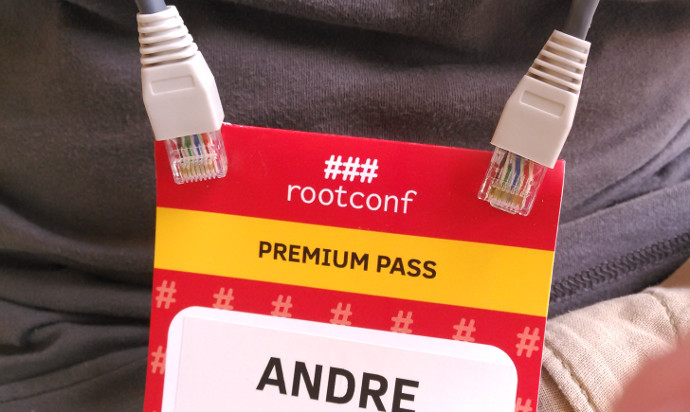
Hardware recycling via badge lanyards
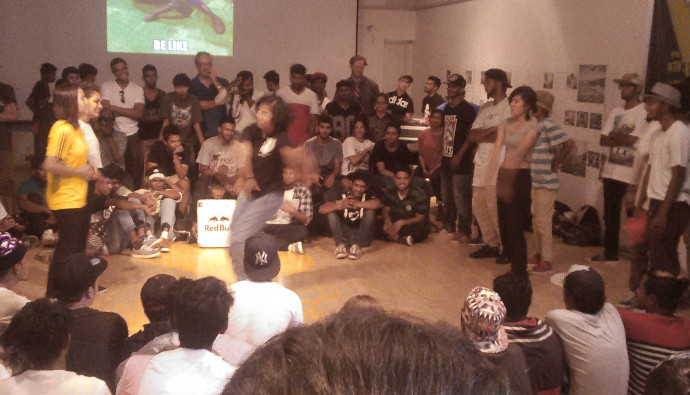
Breakdance competitions
In a society where the path of welfare could be expressed by “walk → motorbike → car”, I received some grins admitting I had never had a motorbike ride before. In Indian traffic I’d call that an experience, for a tourist like me.
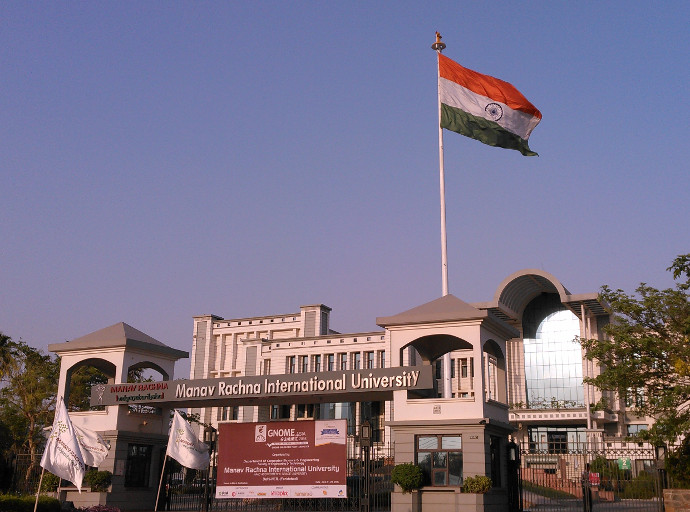
GNOME.Asia 2016 venue
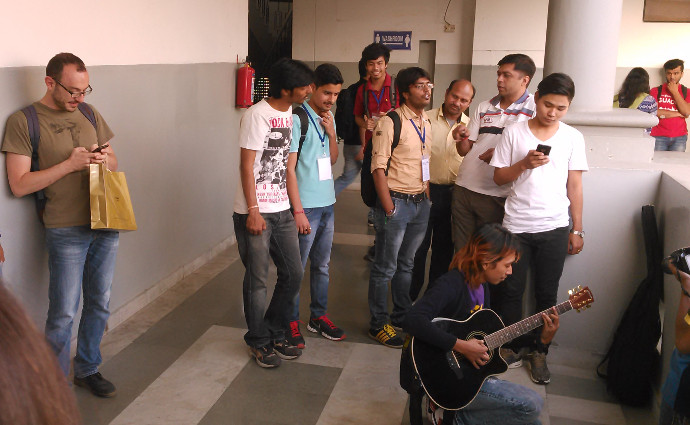
GNOME.Asia 2016 music
As usual, it’s wonderful to finally meet folks in person who you’ve only spoken to online beforehand, and to hang out with old friends. (I sound like a broken record here. I am sorry I could not see everybody. I’ll be back.)
Sometimes, when some individual, group, institution publishes, releases, leaks a cruel video of this planet’s conflicts, media decide not to show it or only show a (edited) screenshot.
I usually end up trying to find the uncut video on the internet because I naively believe I can better realize how cruel things are when I force myself to watch it.
So I constantly feel the need to defend my behavior against accusations of voyeurism and dehumanization: “Can’t you imagine the rest anyway? Haven’t you played video games and watched enough fictitious movies?”
A few months ago I bought the photo book “War Porn” by Christoph Bangert (a photo journalist in war regions). The photos are somewhere between disturbing and disgusting.
Bangert also covers the aspect of self-censorship as a photographer or publisher, hence for some of the pages you have to decide yourself whether to break the perforation to see the image included on that page.
The book’s introduction puts it into simple words that I could not find myself:
“What’s the point of showing these things? We know that wars and disasters are horrible events. But are we really aware of just HOW horrible they are? Yes? Why are we so shocked by these pictures, then?”

Google Code-in 2015 is over. As a co-admin and mentor for Wikimedia (one of the 14 organizations who took part and provided mentors and tasks) I can say it’s been crazy as usual. :)
To list some of the students’ achievements:
Numerous GCI participants also blogged about their GCI experience with Wikimedia:
The Grand Prize winners and finalists will be announced on February 8th.
Congratulations to our many students and 35 mentors for fixing 461 tasks, and thank you for your hard work and your contributions to free software and free knowledge.
See you around on IRC, mailing lists, Phabricator tasks, and Gerrit changesets!
Publishing my usual list of awkward and never complete pop music preferences of 2015.
Grimes’ “Art Angels” is probably my favorite album of 2015. Halsey’s “Badlands” debut and the latest releases by Purity Ring and Chvrches came close.
In general Angel Haze was the most dominant artist in my playlist. I also enjoyed Little Simz’ “A Curious Tale of Trials + Persons” debut and FKA Twigs’ “M3LL155X”.
Other helpful artists were We are Twin, Leftfield (with a surprisingly great 2015 release), Lowell, TĀLĀ, Camila Moreno, and Tei Shi, and Autobahn.

Another round of Google Code-in started yesterday. Together with Nemo and Petr I am one of the organization administrators for the Wikimedia community.
In this year’s edition of Google Code-in, students can choose from tasks provided by the following organizations / projects: Apertium, Copyleft Games, Drupal, FOSSASIA, Haiku, KDE, MetaBrainz, OpenMRS, RTEMS, SCoRe, Sugar Labs, Systers, Ubuntu, and Wikimedia.
If you are a 13-17 year old pre-university student interested in getting involved into free and open source software development, check out Google Code-in.
It is a great opportunity to learn about distributed software projects, to find out which areas of software development you are interested in, to gather some on-hands experience, to contribute to “real” projects out there used by millions of people, and to make new friends all over the world.
Wikimedia is an organization which has both volunteers and paid folks working together in software development, with many software projects and different stakeholders involved.
In Wikimedia, there is currently some discussion how to improve the code review process. One aspect is reducing our code review queues and waiting times, with a focus on contributions provided by volunteers.
There are numerous successful free and open source software projects with a similar setup of companies and volunteers involved (Mozilla, Openstack, …) so I’m curious if your project has also investigated similar questions and if there is some knowledge and experience to share.
I’d be very interested in hearing how your project handles these issues. Needless to say, links to documents are welcome. Thanks!
Continuing with the first day: Shobha Tyagi elaborated on the acceptance problems when moving users from Microsoft Windows to Linux based systems at her university. That talk resulted in interesting follow-up discussions on regional differences.

Shobha’s talk
Later on, lightning talks took place.
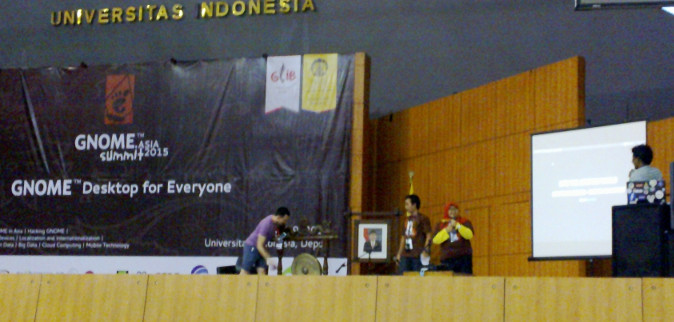
Olav banging the lightning talk gong
On the second day, Alexandre Franke explained the GNOME release cycle.
Kukuh Syafaat showed how he uses his guitar, keyboard and computer running Ardour, Guitarix, LMMS and the JACK audio connection kit to make music with GNOME.
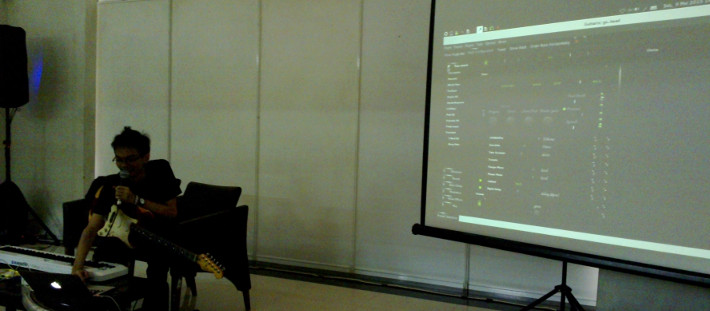
Kukuh’s talk
And Yantisa Akhadi presented OpenStreetMap’s impressive improvements in covering Asia, often leaving commercial map services like Bing or Google far behind.
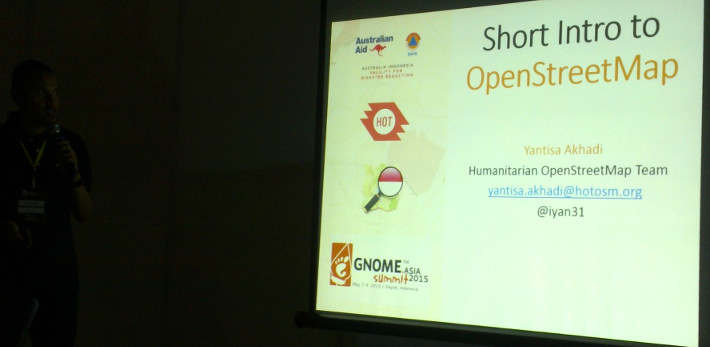
Yantisa’s talk
The second day ended with a thunderstorm. It created a refreshing breeze in the main hall and made the frogs speak up outside the hall.
Again, kudos to the organization team (great work!) and thanks to the sponsors!
This was the fourth GNOME.Asia summit I attended. Compared to GUADEC (the annual European conference), GNOME.Asia seems to have more fluctuation among attendees (as travelling can be more expensive in Asia due to its size and flight costs in comparison to costs of living?). There also seem to be more attendees that show up being curious what that international conference at the university is about, so it feels good to have some “how you can get involved” talks covering coding, documentation, translation, QA / bug triaging, engagement / marketing, …
GNOME.Asia summits also offer more talks with a regional focus. Would have loved to attend the “Open Source Software in the shoes industry” or “My experience as a farmer, trader and principle of village affairs in contributing to BlankOn” talks – unfortunately they were at the same time as my own talk.
Still it was a gift to speak with many community members while walking around, grabbing coffee or food, or just standing outside enjoying the sun.
Terima kasih.
It’s that time of the year again: GNOME.Asia Summit at Universitas Indonesia in Depok (Indonesia)! On Thursday some workshops took place how to contribute to GNOME translation and documentation and how to start coding.
Today (Friday) is Day 1 of the conference.
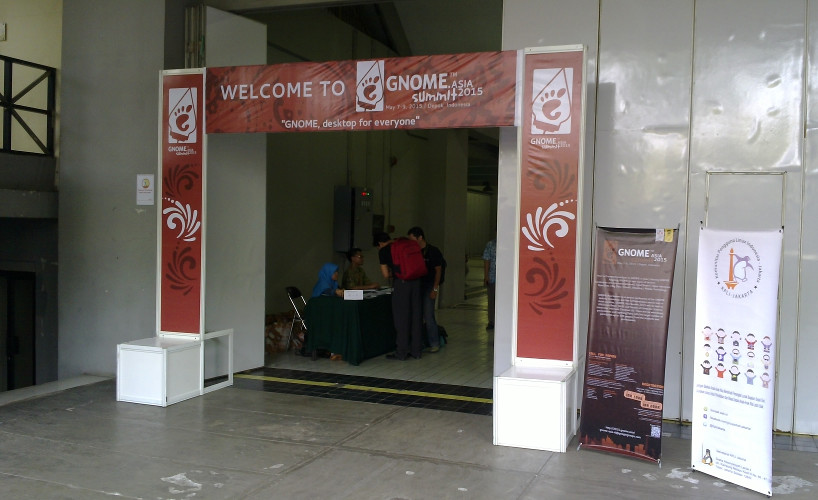
Entrance to the main hall
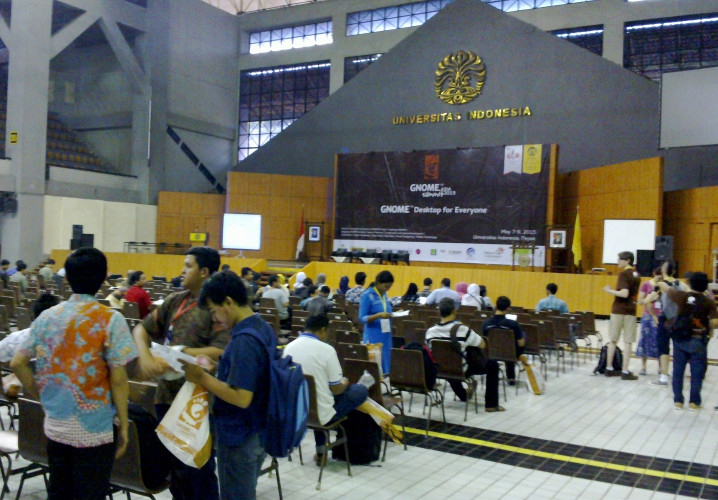
The main hall (before opening)
There were welcoming speeches by the local organization team, Kat Gerasimova of GNOME, Mirna Adriani, PhD (Dean of the computer science faculty) and Aidil Chendramata (from the Ministry of Communication and Informatics).
Later today I am going to give an introduction to handling (“triaging”) bug reports in GNOME’s issue tracking system.
A big thanks to the local organization team and the many sponsors of this conference for making this possible!